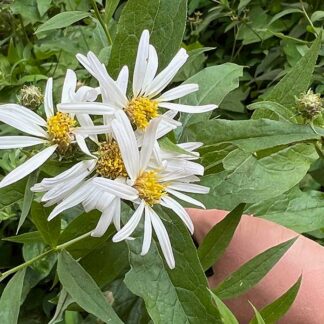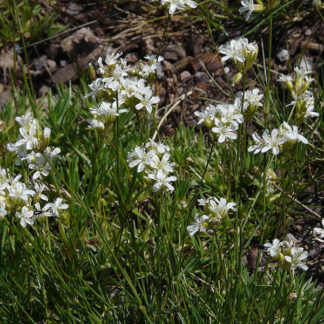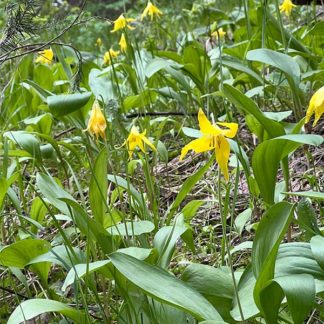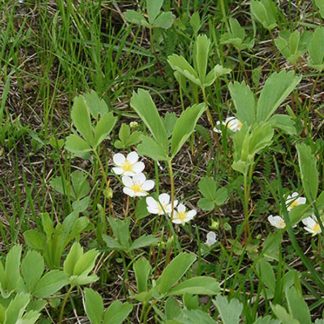forest openings
Showing 13–24 of 71 results
-

Corydalis aurea / scrambled eggs
- prostrate herb, up to 15" tall
- moist but well-drained soils, including on roadsides
- yellow tubular flowers, with spurs
- highly dissected leaves, blue-grey except when young
- fruits are pod-like, resembling peas or beans
-

Crataegus douglasii / black hawthorn
- slightly thorny shrub or small tree, to 30 feet
- often forms thickets
- broad leaves with toothed edges, clumped at ends of branches
- clumps of white, globe-shaped flowers in spring; prominent black anthers
- clumps of black "berries" in autumn
-

Dactylis glomerata / orchardgrass
- perennial bunchgrass
- branched inflorescence with lowest branch well below the others
- spikelets wedge-shaped, flattened in tight clusters
- florets green to red/purple tinged; grey-brown when seeds mature
- introduced and widespread, but not in wet areas
-

Doellingeria engelmannii / Engelmann’s aster
- shade tolerant - in mountain woods and meadows
- late summer/autumn blooming
- each blossom/flower has only a few curly rays around a yellow disk
- ray florets mostly white, but possibly pink or blue
- ovate leaves, mostly hairless and sessile; prominent veins.
-

Drymocallis glandulosa / sticky cinquefoil
- deeply lobed (almost compound) leaves (3-5 lobes)
- clusters of cream or white 5-petaled flowers
- pointy green sepals visible between non-overlapping petals
- ≥25 stamens
- sticky stems, involucres and buds (glandular hairs)
-

Elymus trachycaulus / slender wheatgrass
- cool season bunchgrass; no rhizomes
- flower spikes very narrow and linear; overlapping spikelets tightly pressed to stem
- flat, medium-width leaves; somewhat bluish
- beautifully straw colored in fall
- common but rarely abundant; many habitats
-

Equisetum arvense / field horsetail
- segmented brown stems with spore-bearing "cone" at the tip
- or - segmented green stem with thin green branches radiating from nodes
- distinctly visible nodes along the stems
- no leaves or flowers
- found in many different habitats
-

Eremogene kingii / King’s sandwort
- low-growing herb with long, thin basal leaf clusters
- white, 5-petaled flowers, ca. 1/2 in across, in terminal clusters
- 10 stamens, sometimes dark, sometimes white
- at higher elevations on shallow soil
-

Erigeron speciosus / aspen fleabane
- prolific purple-ish flowers with many "petals" and a yellow center
- forest openings and edges, meadows
- late blooming - a "fall aster"
-

Erythronium grandiflorum / glacier lily
- striking, yellow, six tepals - recurved and nodding
- large, yellow or red anthers, a single pistil
- two large green basal leaves
- early spring
-

Festuca idahoensis / Idaho fescue
- a bunchgrass growing in very dense clumps
- over-winters green; an early green grass in spring
- green to blue-green to silvery green leaves
- individual flowers in clusters of hairy spikelets on branched panicles; very dark purple or green
- seeds have large spines (awns) at the tips
-

Fragaria vesca / woodland strawberry
- trifoliate, light green markedly toothed leaves
- clusters of hairy, 5-petaled white flowers on a soft-hairy stem
- plants spread by stolons
- fruit (if any) red with bumps where the seeds are
- spring/early summer bloom
- widespread
Showing 13–24 of 71 results